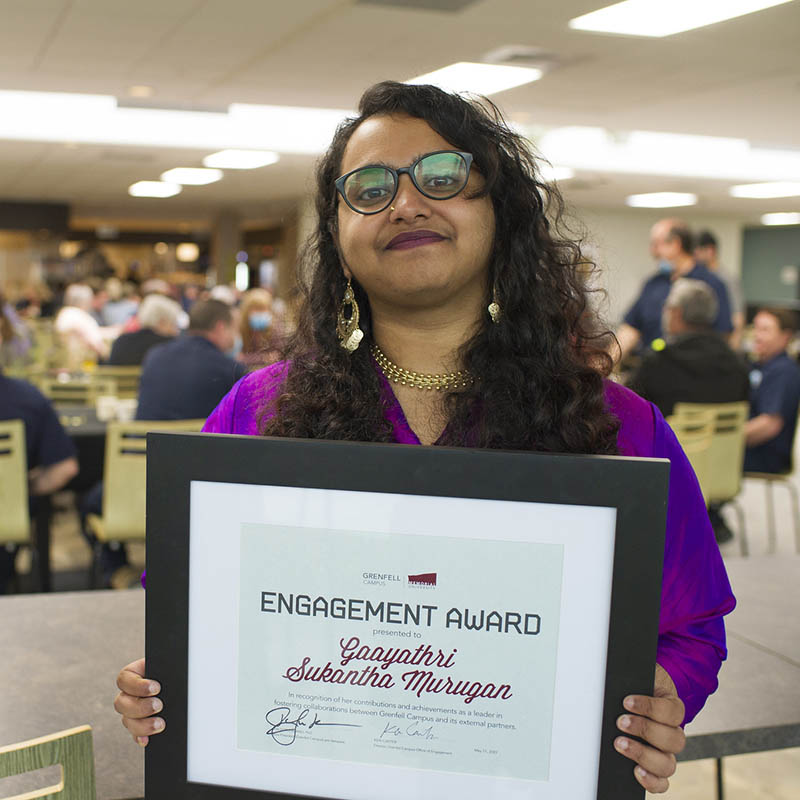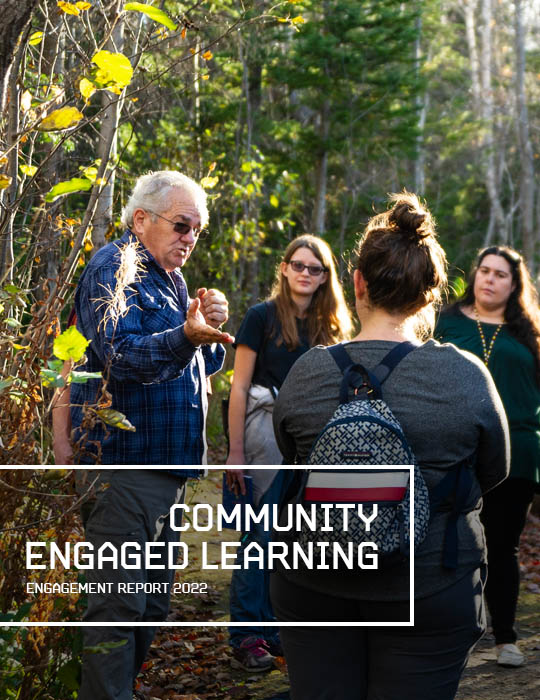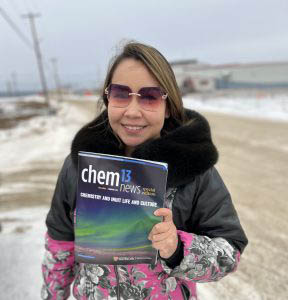Choose a report:
➤

Office of Engagement

Community Engaged Research

Community Engaged Learning



Rosalina Naqitarvik with Chem13 News
In 2002, Dr. Geoff Rayner-Canham, F.C.I.C., developed a presentation to showcase chemistry experiments in everyday life and took it on the road to grade schools across Newfoundland and Labrador.
The Grenfell Campus, Memorial University, chemist's demonstrations of the science behind disposable diapers, super-strong Kevlar, and memory metal were a hit, everywhere he went. But when he visited Inuit schools in Nunatsiavut, the Inuit self-governing portion of northern Labrador, Rayner-Canham was astounded by the reception.
"These kids were absolutely fascinated," he recalls. "It was phenomenal, really."
Encouraged, Rayner-Canham brought his travelling chemistry 'show' to the Inuit communities of Nunavut, where students were just as keen. In fact, they taught him a thing or two - for example how they use a type of mushroom known as a puffball to treat bacterial infections.
"Up in the Arctic, there isn't a Shoppers Drug Mart around the corner," he says. "If you cut yourself or have an infection, you have to deal with it."
During his road show, partially funded by the CIC Chemistry Education Fund, Rayner-Canham would usually bring one or two Grenfell Campus chemistry students to help. So when Chaim Christiana Andersen, a gifted Inuit student from Nain, Nunatsiavut, showed up in one of his university classes, Rayner-Canham was thrilled to have her pitch in. It would prove to be an important collaboration.
"When you're on the road together like that, you get to chatting and we got talking about how chemistry is a part of Inuit life," recalls Rayner-Canham.
Those conversations led the pair to team up to produce a series of articles for Waterloo University's Chem 13 News about Inuit chemistry. A few years later, Rayner-Canham began working with another gifted Inuit student, Rosalina Naqitarvik from the High Arctic community of Ikpiarjuk, ᐃᒃᐱᐊᕐᔪᒃ (Arctic Bay). Together, they wrote more Inuit chemistry articles for Chem 13 News.
This fall, Waterloo released a special issue of its newsletter dedicated to a compilation of the articles Andersen, Naqitarvik, and Rayner-Canham wrote. Copies have been sent to every high school in Canada, plus to all-grade schools in Nunavut and Nunatsiavut.

" The newsletter includes features on the chemistry of snow and soy sauce - an "essential Inuit condiment" - plus the newest Arctic pollutant, PFOS, and the molecular structure of animal skins. Each article features personal insights from community elders and from Naqitarvik and Andersen, including the summer Andersen was allowed for the first time to clean a seal skin using her family's ulu, a women's knife. She recalls how she and her siblings would sometimes come home from school to find their mother in the living room cleaning a skin, and how she thought it looked easy - until she tried it herself.
Naqitarvik, who wrote the article on composites in Inuit life, was especially pleased to feature a section on the amauti. It is, she says, one of the most beautiful and useful items of Inuit clothing. The amauti is a parka worn by Inuit women with very young children that features a built-in baby pouch just below the hood.
"I grew up in one," says Naqitarvik. "I see fellow community members wearing them all the time, and I now own some myself for my baby girl."
Building on the success of the Chem 13 News special issue, she and Rayner-Canham have collaborated on a PowerPoint presentation which was a great success with Inuit students when trialled at the Iqaluit high school. They now plan to take the presentation to other schools across Nunavut. Naqitarvik says her involvement in both projects has helped her to see her way of life from a different perspective and to understand the rich opportunities it presents for science education.
"I want to shine more light on the chemistry of my Inuit culture," says Naqitarvik. "It's also important that Canadians and other interested individuals learn more about the chemistry here in the Arctic."
Story by Sharon Oosthoek Originally published by the Chemical Institute of Canada, November 2022